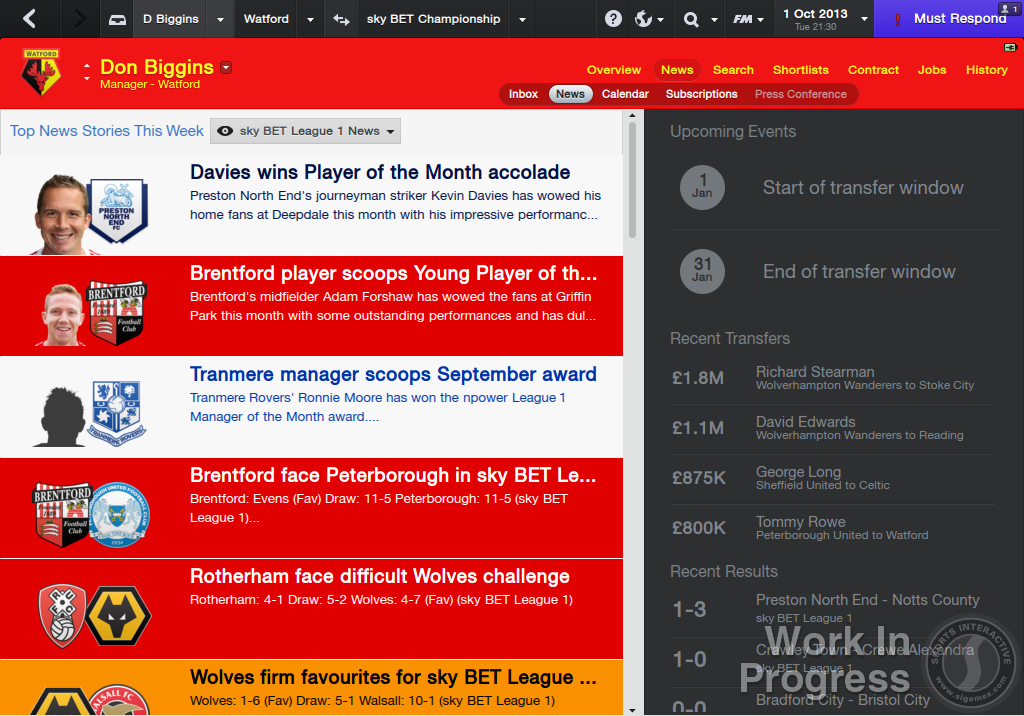
Useful Attributes Specific Player Instructions | Football Manager 2014 Guide 1 / 9 Shoot More Often Shoot Less Often Dribble More Dribble Less Run Wide With Ball Cut Inside With Ball Distribution The following instructions affect how a player should pass the ball. However, too many players instructed to hold up the ball can slow down attacking play too much. Most tactics will use a holding midfielder and possibly an attacker to hold up the ball. This can lead to a better decision being made and more effective build-up play, but it can also cause opportunities for quick passes or shots, or direct dribbling, to be missed. Hold Up Ball Your player will be more likely to try to shield the ball while waiting for supporting teammates to get forward or move into space, and less likely to turn and dribble towards the opposition goal, make an early pass or shoot at goal. Possession The following instructions affect how a player should behave when he is on the ball.

Analysis of Instructions Provided below is a description of each instruction and an analysis of when you may want to use it. However, by using the various roles and duties tactical analyses earlier in this guide and by checking which greyed out instructions are already active as described above, you can gain a good idea of how instructions for groups of players in each area of the pitch should be balanced and what each of your players has been instructed to do. Ensuring that your instructions are well balanced can be a difficult task.

If you are making a lot of alterations then it may be the case that a different role and duty would be more suitable. Balancing Instructions You should be careful when altering instructions however, and ensure that your changes do not cause your tactic to become unbalanced. For example, you may want your team to be more aggressive by closing down earlier and making earlier tackles, but only want to instruct a few of your players who have better fitness and tackling ability to do this, so that the strategy can be effective without disrupting your team’s defensive structure too much. Similarly, a specific player instruction can be used as an alternative to its equivalent specific team instruction, so as to gain more control over which players the instruction is given to. For example, you could instruct a more creative player with good passing to make More Direct Passes when using the Shorter Passing specific team instruction, so that he acts as your team’s main creative passer to a greater extent than would be the case by just giving him a more creative role. You might also want to use specific player instructions that contrast with your overall team instructions, so that one or more players will be an exception to your team’s general tactical approach. If you want to modify the instructions given by a role and duty to suit your tactics then you will want to ensure that the changes are applied for all players by using the any player in this position option. If you are modifying instructions to suit a particular player’s abilities then this is best done by adding specific instructions for that player only using the Add Player button on the Instructions for panel.

When to Modify Instructions You may want to make such modifications so that a particular player’s instructions better suit his abilities or so as to adjust the instructions given by a role and duty to better fit your overall tactical setup. Any instructions that conflict with an instruction that has already been selected will be highlighted in red. Furthermore, some instructions conflict with each other and therefore cannot be selected together. Hovering over a greyed out instruction will reveal a tool-tip that explains which of these is the case. Some instructions will be greyed out and so unavailable, either because they are not suitable for the selected position, not suitable for the selected role and duty, or already active for the selected role and duty.

This is done by selecting Add Instruction on the Instructions panel and choosing from the selection of available specific player instructions. In some cases you may want to further refine certain player instructions in order to slightly modify how a player plays in a way that cannot be achieved by simply giving him a different role and duty. Specific Player InstructionsAs previously discussed, each player in your tactic is given a set of player instructions that are determined by your chosen team instructions, his position in your formation and the role and duty combination he has been assigned.


 0 kommentar(er)
0 kommentar(er)
